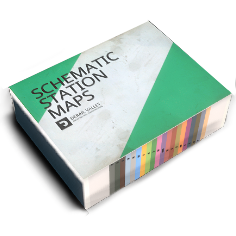Braking Overview: Difference between revisions
Add warnings plus tweaks |
Marked this version for translation |
||
| Line 28: | Line 28: | ||
* Excessive {{pll|Dynamic Brake|dynamic brake}} use leading to {{pll|Powertrain Overheating|powertrain overheating}}. | * Excessive {{pll|Dynamic Brake|dynamic brake}} use leading to {{pll|Powertrain Overheating|powertrain overheating}}. | ||
==== Warnings ==== | ==== Warnings ==== <!--T:10--> | ||
<!--T:11--> | |||
Depending on the session {{pll|Difficulty|difficulty settings}}, a flashing warning light above the {{pll|Monitoring|brake pipe gauge}} indicates some problems with the braking system. It may mean: | Depending on the session {{pll|Difficulty|difficulty settings}}, a flashing warning light above the {{pll|Monitoring|brake pipe gauge}} indicates some problems with the braking system. It may mean: | ||
* There is a {{pll|Handbrake|handbrake}} applied somewhere on the train. | * There is a {{pll|Handbrake|handbrake}} applied somewhere on the train. | ||
Revision as of 19:14, 17 March 2025
Brakes are devices found on rail vehicles designed to slow them down, bring them to a halt, or keep them stationary. There are several different types of braking systems that are typically present on motorized and other rolling stock, with each being advantageous for a particular purpose. They are each operated by an individual control device, usually a lever or a crank that may be located inside the cab, or on the vehicle’s exterior.
Application of brake control devices is almost always made to be oriented away from the driver. This is so that, in case of emergency, one can push all the levers forward as a safety measure, without needing to think of each control individually.
The types of braking systems are:
- Train brake - Used to slow down or stop trains.
- Independent brake - Used to slow down or stop individual vehicles, such as locomotives.
- Dynamic brake - Used to aid train brakes in slowing down trains.
- Handbrake - Used to ensure that a train or individual vehicle remains stationary indefinitely.
Risks
Some of the main risks associated with brakes are:
- Parked trains turning into runaways due to brake cylinder leaks and no applied handbrakes.
- Forgotten applied handbrake(s) resulting in hindered pulling power.
- Badly set up brake pipe valves leading to limited brake availability.
- Traction loss resulting in wheelslide if brakes are applied too hard in wet conditions.
- Prolonged mechanical brake usage resulting in brake shoe overheating and loss of braking power.
- Incorrectly setup brake cutout valves, resulting in dysfunctional train brakes.
- Excessive dynamic brake use leading to powertrain overheating.
Warnings
Depending on the session difficulty settings, a flashing warning light above the brake pipe gauge indicates some problems with the braking system. It may mean:
- There is a handbrake applied somewhere on the train.
- One of the brake pipe valves is incorrectly setup somewhere on the train.
- There are more than one brake control devices cut in, or none is, on the train.
